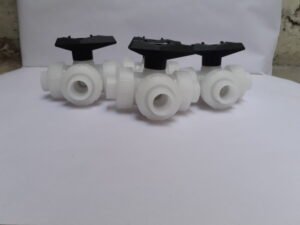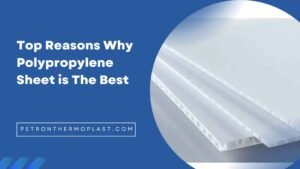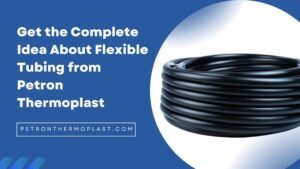Bearings and bushings are available in various sizes and materials, including metal, plastic composites, and a combination. This variety implies you can figure out exactly what you need for a particular project; however, with so many options, how do you choose the best bushing plastic for you? Both plastic and metal have distinct features and advantages, and your choice will be determined by the project, your budget, and other factors.
Know more technical details about bushing plastic.
What exactly are the Plastic Bushings?
Plastic bushings are inexpensive and versatile and used in various industries, including agriculture, medicine, and machines such as fitness equipment, lawnmowers, food processing heavy equipment, pumps, and valves. Because the production of these bushings is quick and inexpensive, opting for plastic over metal may save you money, depending on the type of plastic you select.
Engineered bushing plastics have a consistent wear rate, allowing you to calculate the service life of an application using a tribological test database. You can accurately identify their service life span and replace them before they fail, knowing you used them for the maximum amount of time possible. That means fewer errors, less guesswork, and more money and time secured.
Plastic bushings are resistant to corrosion and chemicals, as well as being self-lubricating—no grease required! If you think plastic can’t withstand heat, you might be surprised to learn that these bushings can withstand temperatures as high as 900°F for short periods. They can operate in temperatures as high as 482°F for extended periods of time.
What exactly are Bronze Bushings?
With all of the advantages of plastic, where does metal stand? Bronze remains a popular selection for bushings because it is available in many alloys and compositions, allowing it to be used in a broader range of applications. Bronze bushings are harder and less likely to crack or deform than other machined components.
How do you choose the proper polymer bushing material?
Bronze bushings, like plastic, are long-lasting and corrosion-resistant. As previously stated, their structure enables them to withstand impact. One possible drawback is that metal requires lubrication to reduce friction and extend the service life of the bearing. During installation and operation, oil or grease must be applied.
Choosing the right material for optimum performance is one of the most important design choices when selecting a bushing. This blog post will look at the five most common polymer bushing materials, PTFE, PEEK, Nylon, Ryton®, and UHMWPE, and what they have to provide.
- PTFE:
It is frequently used in high-speed, high-temperature polymer bushing applications. It is commonly known or referred to by the tradename Teflon. It is ideal for high PV bearing applications, with surface speeds reaching 5,900 ft/min (30 m/s). PTFE has a broad working temperature, ranging from cryogenic to 550°F. It has high chemical resistance and extremely low friction; industry people can even use it in dry running applications.
Certain grades are also FDA and USDA-compliant. Adding additives such as fibreglass or graphite increases its strength, dimensional stability, and wear properties.
- PEEK:
It is another strong contender for high-speed, high-temperature polymer bushing applications that require higher loads. PEEK Plastic Material has a higher load capacity than any other option and a maximum operating temperature of around 480°F. It is chemically resistant and has high strength and wear resistance. Like PTFE, various additives are available to improve its performance as a bushing plastic.

- Nylon:
Nylon is a strong, abrasion-resistant, and chemically resistant bushing material. Nylon bushings are generally self-lubricating and non-galling, with an operating temperature of around 250°F. Chemically, they are weak in strong acids but excel in the presence of hydrocarbons and alcohols. Nylon, like PTFE and PEEK, can be strengthened with additives. You may note that Nylon does not undertake well in cryogenic environments.
People should not use nylon 6 in high-speed or high-temperature applications. It also does not perform well in environments that will be attributed to moisture. Nylon 66, on the other hand, is a popular material for replacing metal bearings. It has a greater maximum temperature of operation than Nylon 6 and is suitable for custom plastic injection molding bushings.
- UHMWPE:
UHMW PE is well-known for its impact strength, the highest of any polymer on the market today, and its toughness. It has a low moisture absorption rate. UHMW PE also has a low coefficient of friction comparable to PTFE, as well as hydrophobic and non-stick properties roughly equivalent to PTFE. Its primary constraint is its lower operating temperature than PTFE and PEEK.
- PPS:
It is also referred to by the trade name Ryton. A further promising option for metal and ceramic bearings is PPS. It has a chemical resistive property second only to PTFE. PPS can withstand continuous operating temperatures of around 400°F. It has almost no creep and absorbs very little moisture, trying to make it very dimensionally sustainable. PPS can be strengthened with additives like carbon and graphite.
It is self-lubricating and resistant to wear. Due to its similar range of temperature and friction coefficient PPS is frequently regarded as a lower-cost substitute for PEEK.
Petron Thermoplast is the best provider of plastic bushings products. We provide our products at an affordable cost. Hence, people can utilize our best quality bushing plastic for different industrial requirements.





Pingback: ไก่ตัน
Pingback: แนะนำเกมสล็อตน่าเล่นจากค่าย สกายวิน สล็อต
Pingback: คาสิโนออนไลน์
Pingback: ต่อผมแท้
Pingback: about tokens
Pingback: ทัวร์
Pingback: best cams
Pingback: สอนภาษาไทยให้ชาวต่างชาติ
Pingback: jebjeed888
Pingback: หวย
Pingback: painting service Auckland
Pingback: drain cleaning phoenix
Pingback: วิธีเพิ่มยอดไลค์
Pingback: เว็บตรงฝากถอนง่าย